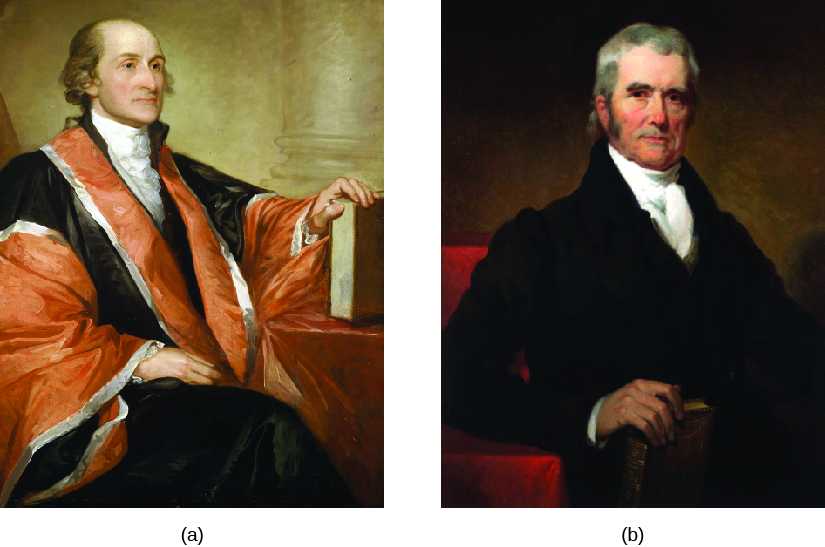| << Chapter < Page | Chapter >> Page > |

In 1803, the Supreme Court declared for itself the power of
judicial review , a power to which Hamilton had referred but that is not expressly mentioned in the Constitution. Judicial review is the power of the courts, as part of the system of checks and balances, to look at actions taken by the other branches of government and the states and determine whether they are constitutional. If the courts find an action to be unconstitutional, it becomes null and void. Judicial review was established in the Supreme Court case
Marbury v. Madison , when, for the first time, the Court declared an act of Congress to be unconstitutional.
Since
Marbury , the power of judicial review has continually expanded, and the Court has not only ruled actions of Congress and the president to be unconstitutional, but it has also extended its power to include the review of state and local actions. The power of judicial review is not confined to the Supreme Court but is also exercised by the lower federal courts and even the state courts. Any legislative or executive action at the federal or state level inconsistent with the U.S. Constitution or a state constitution can be subject to judicial review.
The Supreme Court found itself in the middle of a dispute between the outgoing presidential administration of John Adams and that of incoming president (and opposition party member) Thomas Jefferson . It was an interesting circumstance at the time, particularly because Jefferson and the man who would decide the case—John Marshall —were themselves political rivals.
President Adams had appointed William Marbury to a position in Washington, DC, but his commission was not delivered before Adams left office. So Marbury petitioned the Supreme Court to use its power under the
Judiciary Act of 1789 and issue a writ of mandamus to force the new president’s secretary of state, James
Madison , to deliver the commission documents. It was a task Madison refused to do. A unanimous Court under the leadership of Chief Justice John Marshall ruled that although Marbury was entitled to the job, the Court did not have the power to issue the writ and order Madison to deliver the documents, because the provision in the Judiciary Act that had given the Court that power was unconstitutional.
Perhaps Marshall feared a confrontation with the Jefferson administration and thought Madison would refuse his directive anyway. In any case, his ruling shows an interesting contrast in the early Court. On one hand, it humbly declined a power—issuing a writ of mandamus—given to it by Congress, but on the other, it laid the foundation for legitimizing a much more important one—judicial review. Marbury never got his commission, but the Court’s ruling in the case has become more significant for the precedent it established: As the first time the Court declared an act of Congress unconstitutional, it established the power of judicial review, a key power that enables the judicial branch to remain a powerful check on the other branches of government.
Consider the dual nature of John Marshall’s opinion in Marbury v. Madison : On one hand, it limits the power of the courts, yet on the other it also expanded their power. Explain the different aspects of the decision in terms of these contrasting results.

Notification Switch
Would you like to follow the 'American government' conversation and receive update notifications?